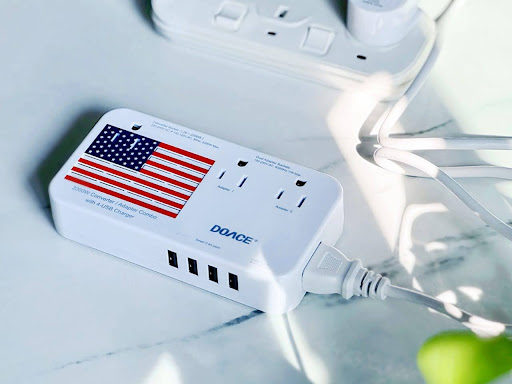Introduction to International Power Adapters:
International power adapter are now necessary to stay connected when traveling abroad due to the rise in international travel. Adapters are essential for maintaining gadgets charged and operational because different nations utilize different voltage systems and power outlets. We’ll examine the world of power adapters in this post, making it easier for you to use outlets in other countries.
Types of Power Outlets Around the World:
Although there are numerous distinct types of power outlets worldwide, they may be roughly divided into four main categories:
- Type A and B: These 120V connectors, which are often seen in North America, can have two or three prongs. The grounding of Type B is three-prong.
- Type C, E, and F: These plugs, which are found in many European countries, are typically 230V and come in two varieties: ungrounded (Type C) and grounded (Type E/F).
- Type G: This 230V socket is found throughout the UK and Ireland.
- Type D and M: These 230V connections, which are often ungrounded, are mostly used in India and a few other countries.
- Type H: It is grounded, 230V compatible, and located in Israel.
- Type I: Found in Australia, New Zealand, and several South Pacific countries, these sockets accommodate 230V and have grounding.
Importance of International Power Adapters:
For several reasons, international power adapters are necessary.
- Device Safety: Directly plugging your gadget into an unsuitable socket might harm it or perhaps start a fire. You may securely power your equipment at foreign outlets by using adapters.
- Compatibility: Location-specific outlet shapes and voltages vary. Many devices may need additional voltage converters or may not fit without an adaptor.
- Convenience: Without requiring separate adapters for every kind of outlet, you can charge your gadgets anywhere with a universal adapter.
Choosing the Right Adapter:
When choosing a power adapter for overseas travel, take into account the following factors:
- Universal Adapters: By supporting various outlet types in various countries, these devices provide a useful choice for travelers who are traveling to several places.
- Verify the voltage compatibility of your equipment to make sure it meets the local voltage standards. Many electrical devices are dual-voltage (compatible with both 120V and 230V), although others could need a voltage transformer.
- Additional Features: It’s simpler to charge numerous devices at once using adapters that feature USB ports.
- Quality and Safety: Select adapters from trustworthy companies to guarantee their dependability and security.
Conclusion:
A traveler’s greatest friend, universal travel adapter offers simplicity and dependability by enabling gadgets to remain charged in many geographical locations. They make traveling abroad easier and guarantee that you keep in touch no matter where your trip takes you.
FAQs:
What is an international power adapter?
You can connect your device to an electrical outlet that is different from those in your home country by using a power adapter. These international travel adapters only enable the plug of your gadget to fit into the foreign socket; they don’t change the electricity.
What is the voltage in international power?
Worldwide, two voltage ranges are utilized: 110–127V and 220-240V. If your gadget fits into either of those categories, variations within that range won’t be a problem for short-term use. For example, your equipment will work if the local power is 110V and the input is shown as 125V.
Is it an adaptor or an adapter?
The question of whether “adaptor” or “adapter” is a better term has been up for debate for years. Technically, both are true, depending on where you live. Although “adapter” is more prevalent in other English-speaking nations like the UK and Australia, it is preferred in the US.
Is the adapter AC or DC?
An AC adapter modifies the voltage of alternating current, whereas a DC converter converts it to direct current.





























